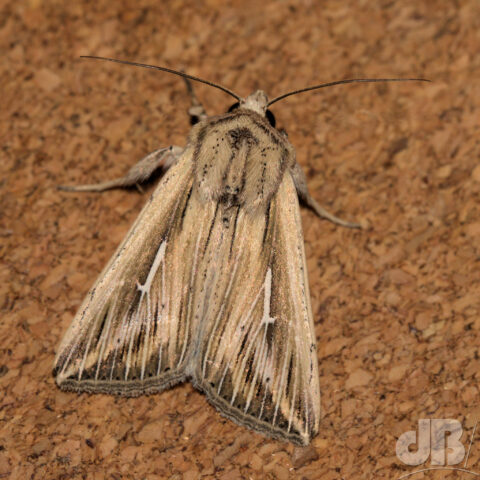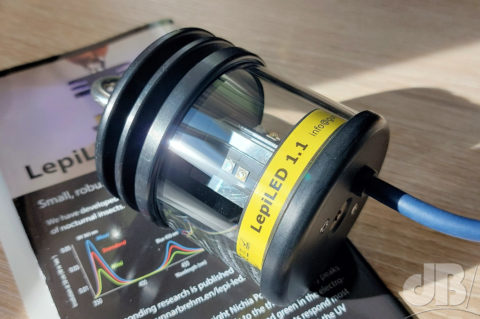TL:DR – The LepiLED UV lamp is a rather useful, low-power and portable lure for use in citizen science with nocturnal Lepidoptera
UPDATE: Aug/Sep 22 – Have done a couple of trips with the LepiLED and a portable trap. First, to the New Forest and then to Corfe Castle. The first, August trip, was quite productive with a few decent moths and a couple that were new to me, such as Rosy Footman. Fewer moths on the September trip, as you’d expect, but again a couple of new ones, including L-album Wainscot and Tachystola acroxantha.

UPDATE: Feb 22 – All set up and lit up on Friday evening at dusk just for a quick trial. The LepiLED is nice and bright and lasted several hours on the battery pack. However, the night was rather chilly, although the wind had dropped, there was very little visible invertebrate activity in the garden, sadly, and no moths seen. In previous years with fluorescent UV lamps, it has been the same, don’t tend to see any moths in February, activity picks up in mid-March.
Apparently, mothing became something of a lockdown hobby for nature fans who weren’t allowed to head out into their usual patch to watch birds, search for orchids, hug trees, etc. I can’t see I’ve heard much evidence that anyone who may have glanced at it as a hobby back in 2020 has kept up with it…let me know if you did and you have. Either way, I’ve been lighting up since July 2018 after being introduced to the idea by my good friend Rob that summer. It became something of an obsession and subsequent years and I’ve been keen to find ways to see new species each season. I’ve clocked and photographed well over 300 unique moth species in that time.
My German lepidopteral contact Gunnar Brehm of whom I’ve written a couple of times on here in the past has now supplied me with a LepiLED device. The device is basically a cluster of LED lights in a chunky protective canister made of ultraviolet-transparent borosilicate glass that is powered using a portable USB powerpack). It has three wavelength peaks for attracting nocturnal insects. Two peaks in the visible spectrum green (530 nanometres) and blue (450 nm), and a third, peak in the ultraviolet (365 nm). The associated research linked to the peak choice in the design can be found here.

Having spent the first four seasons (July 2018 onwards) of my scientific moth-trapping with conventional fluorescent UV tubes (the kind that are used, ironically, in bug zappers), I am very excited to have the opportunity to try a new approach with the lower power, tuned LepiLED device. The weather is not optimal at the moment, it’s very windy and we just had a squally hailstorm/snow shower. But, once I have set up the kit, I will start lighting up and report back to you with the countless specimens I see each evening as the moth season unfolds over the coming weeks.

I have now used an old actinic trap with its UV fluorescent tube removed to build a new rig for the LepiLED. As I mentioned, the lamp uses a USB power supply so should be portable, I can either hang it like it is in the above photo with a net sack added around the funnel (per Brehm’s field approach) to catch the moths or set it on the ground and use the box from the original trap with egg cartons as is traditional…I’ll try both at some point once the wind has died down and I’ve found a decent waterproof way to have the USB powerpack outside.